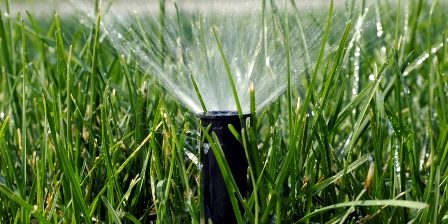To Know when to water your Florida lawn is only possible when you understand your lawn’s environmental needs and tailor your lawn care practices to suit local conditions, you get a healthy, environmentally friendly lawn. Design your yard so it thrives on rainwater alone, without additional irrigation. Another reason for lawn irrigation is the fact that Florida’s sandy soils do not hold much water.
Water your Florida lawn at the right time
Watering in the early morning or late evening when temperatures and wind speeds are the lowest will reduce water loss through evaporation. Check with your local Water Management District office or Cooperative Extension Service office to find out how often to water. Tighter watering restrictions may be in order for different counties ranging from one day per week to two days per week and as restrictive as from 8:00 am to 6:00 pm for no watering.
The best time to water is about an hour before sunrise. This will allow the water to soak in before the heat of the sun. It also will help with preventing mold or fungus to grow if your lawn is constantly wet all night long.
Set your timers
To keep your yard healthy with just enough water, it is important to set your timer with a watering schedule that suits your area considering the amount of rainfall you usually get. For example, in Southwest Florida, a suggested watering schedule is two days a week (such as Monday and Thursday). However, advanced systems now monitor the weather including temperature, humidity, rainfall, wind and more. These systems make it easy for you to water at the right time an the right amount each watering cycle.
Determining when to water
The most efficient way to water your Florida lawn is to apply water when it begins to show signs of stress from lack of water. The following signs are indications of water need:
1. Bluish-gray areas in the lawn
2. Footprints or tire tracks that remain in the grass long after being made
3. Many leaf blades folded in half
4. Soil sample from the root zone feels dry.
Prolonged dry periods of high temperatures, strong winds, and low relative humidity cause these symptoms. During such times, plants wilt even though water may be in the soil, because they are
By following a similar type of schedule in your area, you can save about 10 – 20% on your water bill. However, keep a close eye for signs of excessive wilting if rainfall is not typical. The amount of watering needed can vary by the types of plants you have in your yard and the amount of rainfall you receive.
Position sprinklers properly
Make sure the water lands on your plants and grass and not on paved areas. Lawns only need about ¾ inch of water in one watering session. Place empty tuna cans or measuring cups around the yard (all within range of the sprinkler, some close, some farther away). Turn on the sprinkler for 30 minutes. After 30 minutes, measure the amount of water collected in each can/cup. This will help give you a baseline of how much water should be on the lawn, and if you need to increase the time that you water your Florida lawn.
Signs of a perfect lawn
Avoid extremes water your Florida lawn and alter the frequency and amount. Light, frequent watering is inefficient and encourages shallow root systems. Excessive irrigation, which keeps the root system saturated with water, is harmful to the lawn. Roots need a balance of water and air to function and grow properly. You might also enjoy our blog on knowing when to apply fertilizer on a Florida lawn.
Free Lawn Care & Landscaping Consultation
We are proud to offer all new clients considering our lawn care and landscaping services a free consultation. At Beautiful Boundaries Lawn Care Our Reputation is Growing!







